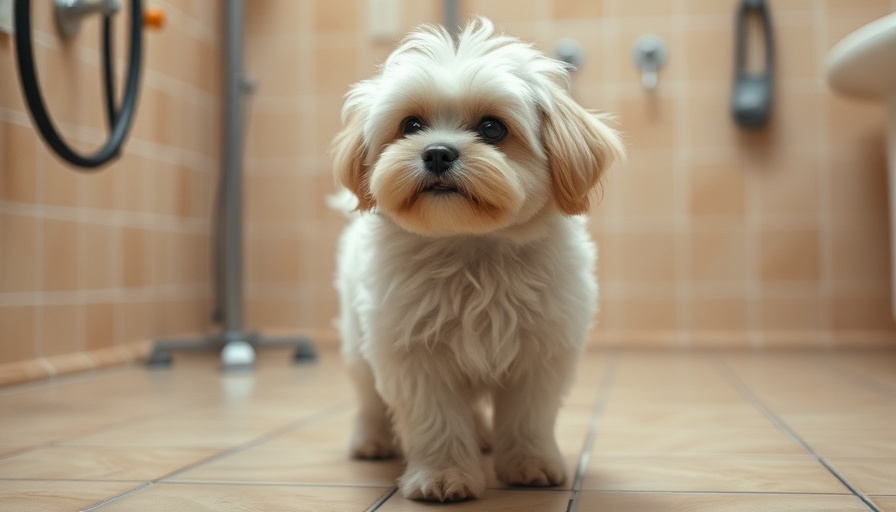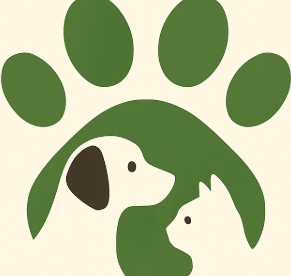
Understanding Your Puppy’s First Grooming Experience
If you’ve recently welcomed a puppy into your home, you might be wondering when and how to begin grooming. Grooming is not just about aesthetics; it’s an essential part of maintaining your dog’s health. In the recent video, Lisa from K9 Clips introduces Blue, an adorable Yorkie-Pomeranian mix, to his very first trim. The video highlights the importance of gentle grooming techniques, particularly for young puppies who may be nervous or wiggly during the process.
In Puppy's 1st trim/clean up of face, paws, bum, sanitary & nail trim, dog grooming, Pom/Yorkie, the discussion dives into the important techniques and insights necessary for successful puppy grooming, sparking a deeper analysis on our end.
Why Grooming Matters
Regular grooming is crucial for puppies as it helps them become accustomed to handling and care. This initial introduction, as seen with Blue, emphasizes maintaining their coats to prevent matting and ensure their skin stays healthy. While the trimming process can seem simple, it involves careful consideration of your dog's specific needs, especially regarding sensitive areas like their face, paws, and behind. Puppies may nip during grooming, but with patience and positive reinforcement, they start to learn that grooming isn't just acceptable but can be enjoyable.
Common Grooming Challenges
Puppies may display a variety of reactions during their grooming experience. In Blue's case, although he was relatively well-behaved, some puppies can be quite anxious. It’s common for them to squirm or try to nip, which can be managed with the right approach. Lisa's method of working through areas prone to matting or trimming helps add a layer of comfort for both the dog and the groomer. Understanding how to navigate these challenges ensures a smoother grooming experience for both pets and owners.
Best Practices for Grooming Your Puppy
Here are some key tips for effective puppy grooming:
- Familiarization: Before grooming, allow your puppy to sniff and explore their grooming tools. This reduces anxiety and builds trust.
- Step-by-Step Approach: Tackle one part at a time—start with the face, then move onto the paws before addressing other areas. Allowing breaks in between can help.
- Use the Right Tools: Invest in appropriate grooming tools for your dog's breed. For example, using scissors rather than clippers for delicate areas can maintain a natural look.
- Positive Reinforcement: Use treats and praise throughout the grooming process. Rewarding good behavior builds a positive association with grooming.
Aftercare: Keeping Your Puppy’s Coat Healthy
After grooming, it’s essential to ensure Blue and other puppies remain comfortable and clean. Regular brushing helps prevent mats and tangles and encourages skin health. Introducing puppy-specific hair products can also aid in maintaining a shiny and healthy coat. For instance, natural, hypoallergenic shampoos can keep their skin free from irritation, particularly if the puppy is on the sensitive side.
Building a Routine
Establishing a grooming routine from the beginning helps shape your puppy’s understanding of personal care. Regular grooming sessions not only keep your puppy looking good but are also an opportunity for bonding. Consider setting aside a specific day and time for grooming, making it a delightful experience instead of a daunting task. Early grooming sessions will lead to a well-adjusted dog who enjoys being pampered.
In Puppy's 1st trim/clean up of face, paws, bum, sanitary & nail trim, dog grooming, Pom/Yorkie, Lisa expertly guides viewers through the first grooming session, highlighting significant learning points for both the groomer and the owner. By following her tips, you can help ensure that your puppy grows into a confident and well-groomed dog, enjoying every grooming session along the way!
 Add Row
Add Row  Add
Add 




 Add Row
Add Row  Add
Add 

Write A Comment